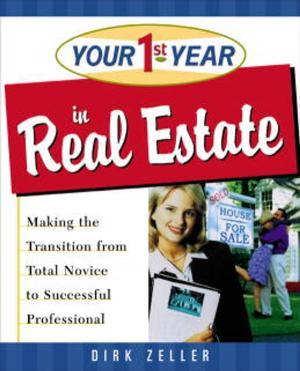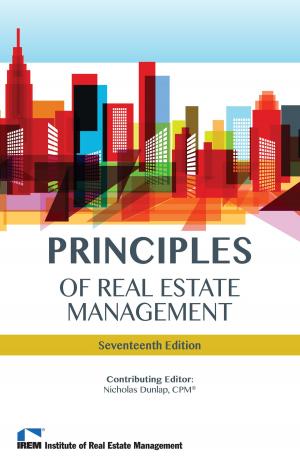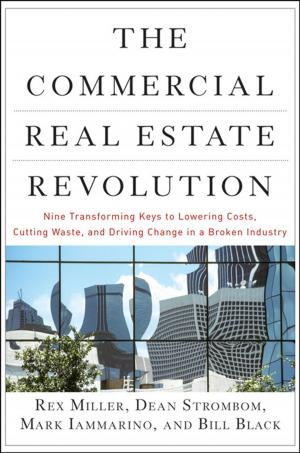| Author: | Jeffrey Roark, Jeff Rohde | ISBN: | 9781519949103 |
| Publisher: | Jeffrey Roark | Publication: | October 12, 2015 |
| Imprint: | Language: | English |
| Author: | Jeffrey Roark, Jeff Rohde |
| ISBN: | 9781519949103 |
| Publisher: | Jeffrey Roark |
| Publication: | October 12, 2015 |
| Imprint: | |
| Language: | English |
It's a well kept secret in buying investment real estate that you are almost always buying the seller's problem.
Think about it this way: If a property has good tenants, is for the most part trouble-free and is cash flowing, why on earth would the current owner want to sell? Sure, there are some legitimate reasons, but even those innocent sounding excuses for selling can hide a hidden agenda. It's safe to say that 99% of the time the new owner is going to face problems with their property purchase, probably sooner rather than later.
Now, the fact that problems may exist doesn't mean an investor shouldn't buy a property. For example, let's say the current use for a building is a multi-tenant office property with a high vacancy rate and you (as the buyer) want to turn it into offices for your business. Or an apartment building needs significant capital improvements, such as a roof repair or replacement of a majority of the HVAC units. Or a retail property sits very close to a school or to a church, a situation that current zoning laws may prohibit your leasing to certain types of tenants, thereby reducing the number of potential business types you can market your vacant retail suites to.
The key is to accurately identify the existing and potential problems, and the likely costs associated with solving those problems. In The Real Estate Property Management Guide I discuss all aspects of property management, including the steps to take when considering what type of investment property is right for you. After all, just because you can buy or finance an acquisition doesn't mean that you should actually invest in it.
In this book, Investment Real Estate Analysis: A Case Study, we drill-down on the specific analysis used by all professional investment real estate brokers and buyers to determine the strengths and weaknesses - and to identify the hidden opportunities - when deciding how to position a piece of real estate for sale. While this case study is written from the seller perspective, as a potential buyer you should always apply these same steps yourself to gain a thorough understanding of what you are buying - before you sign the purchase contract!
This case study is based on an actual activity and will take you inside the mind of a professional real estate investor. While the property type being analyzed is a single-tenant, free-standing office building and while the specific pricing recommendations may not apply to your market or property, the same techniques can be used for any income producing or owner-occupied real estate.
Specific topics covered in this concise book include Site Analysis, Skill & Knowledge Sets, Sales Comparison Analysis, Lease Comparison Analysis, Regional Analysis, Neighborhood Analysis, Linkage Analysis, and the Annual Property Operating Data Report.
It's a well kept secret in buying investment real estate that you are almost always buying the seller's problem.
Think about it this way: If a property has good tenants, is for the most part trouble-free and is cash flowing, why on earth would the current owner want to sell? Sure, there are some legitimate reasons, but even those innocent sounding excuses for selling can hide a hidden agenda. It's safe to say that 99% of the time the new owner is going to face problems with their property purchase, probably sooner rather than later.
Now, the fact that problems may exist doesn't mean an investor shouldn't buy a property. For example, let's say the current use for a building is a multi-tenant office property with a high vacancy rate and you (as the buyer) want to turn it into offices for your business. Or an apartment building needs significant capital improvements, such as a roof repair or replacement of a majority of the HVAC units. Or a retail property sits very close to a school or to a church, a situation that current zoning laws may prohibit your leasing to certain types of tenants, thereby reducing the number of potential business types you can market your vacant retail suites to.
The key is to accurately identify the existing and potential problems, and the likely costs associated with solving those problems. In The Real Estate Property Management Guide I discuss all aspects of property management, including the steps to take when considering what type of investment property is right for you. After all, just because you can buy or finance an acquisition doesn't mean that you should actually invest in it.
In this book, Investment Real Estate Analysis: A Case Study, we drill-down on the specific analysis used by all professional investment real estate brokers and buyers to determine the strengths and weaknesses - and to identify the hidden opportunities - when deciding how to position a piece of real estate for sale. While this case study is written from the seller perspective, as a potential buyer you should always apply these same steps yourself to gain a thorough understanding of what you are buying - before you sign the purchase contract!
This case study is based on an actual activity and will take you inside the mind of a professional real estate investor. While the property type being analyzed is a single-tenant, free-standing office building and while the specific pricing recommendations may not apply to your market or property, the same techniques can be used for any income producing or owner-occupied real estate.
Specific topics covered in this concise book include Site Analysis, Skill & Knowledge Sets, Sales Comparison Analysis, Lease Comparison Analysis, Regional Analysis, Neighborhood Analysis, Linkage Analysis, and the Annual Property Operating Data Report.















